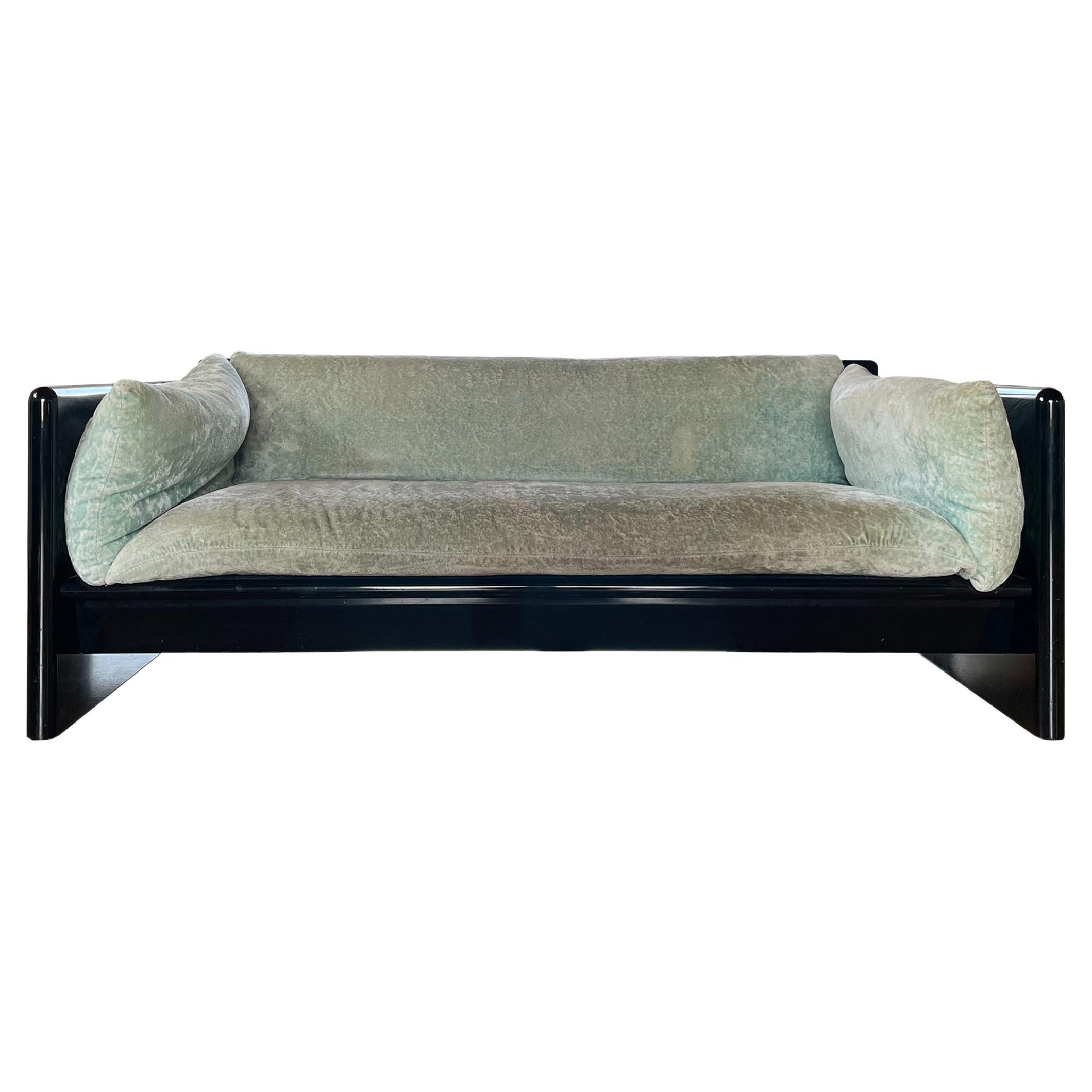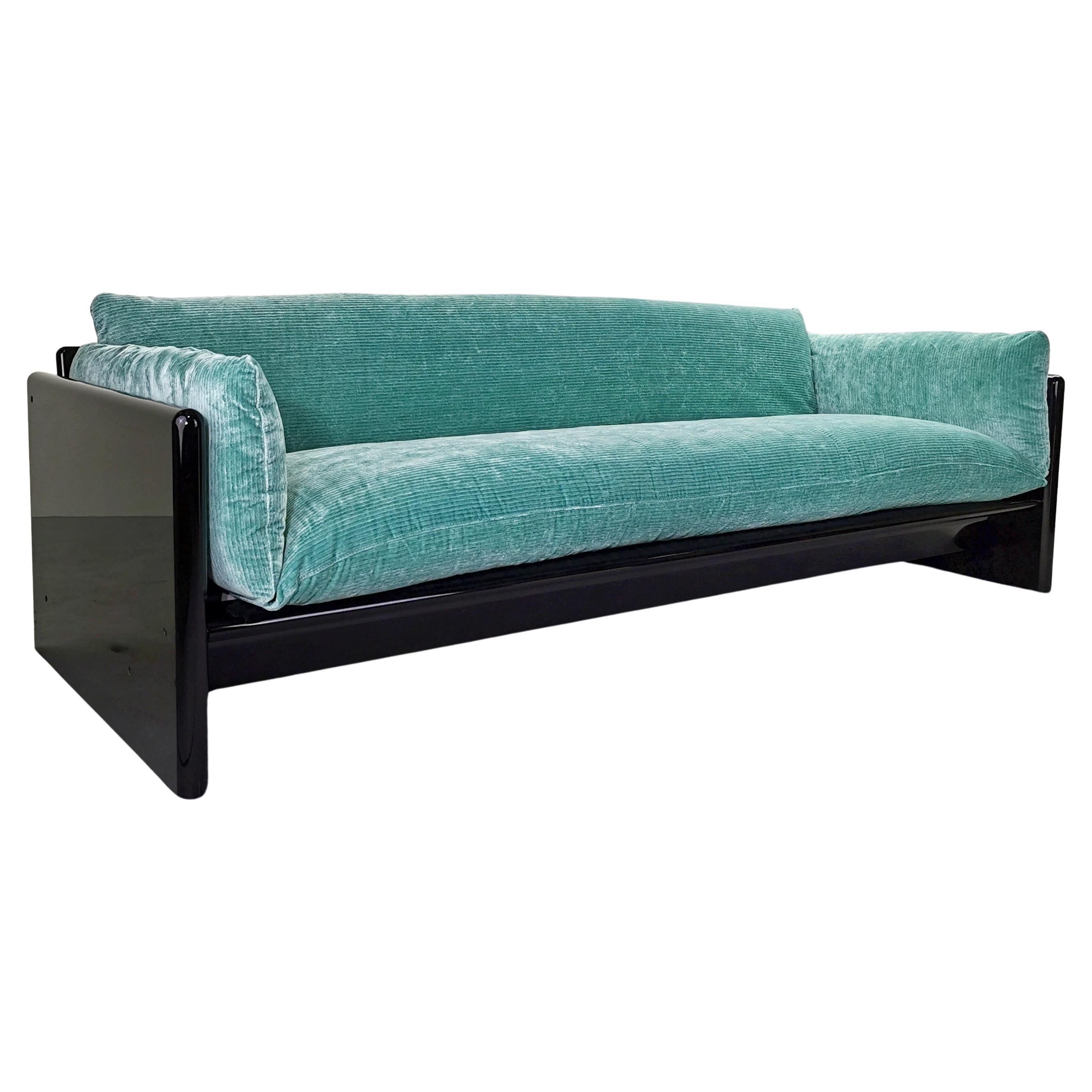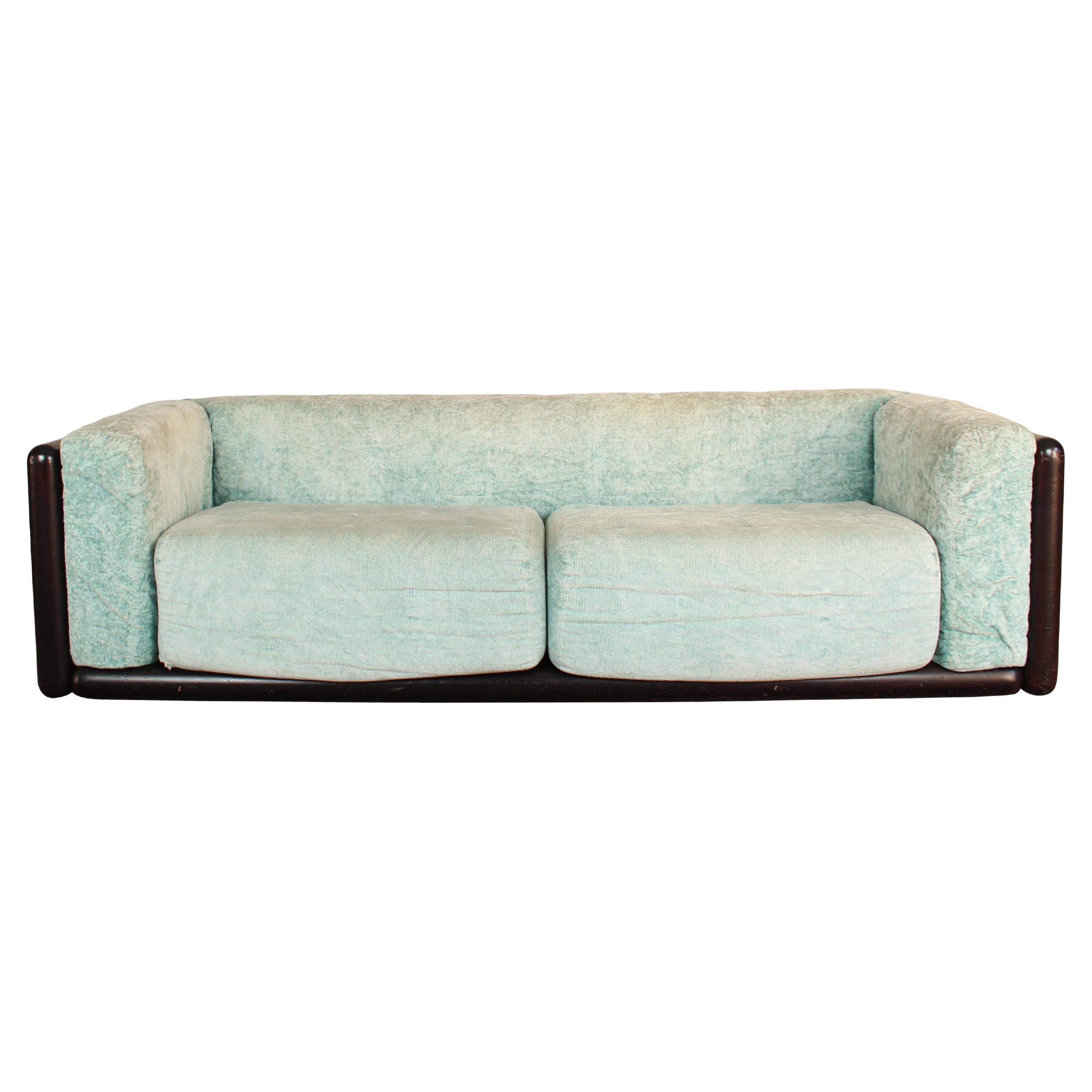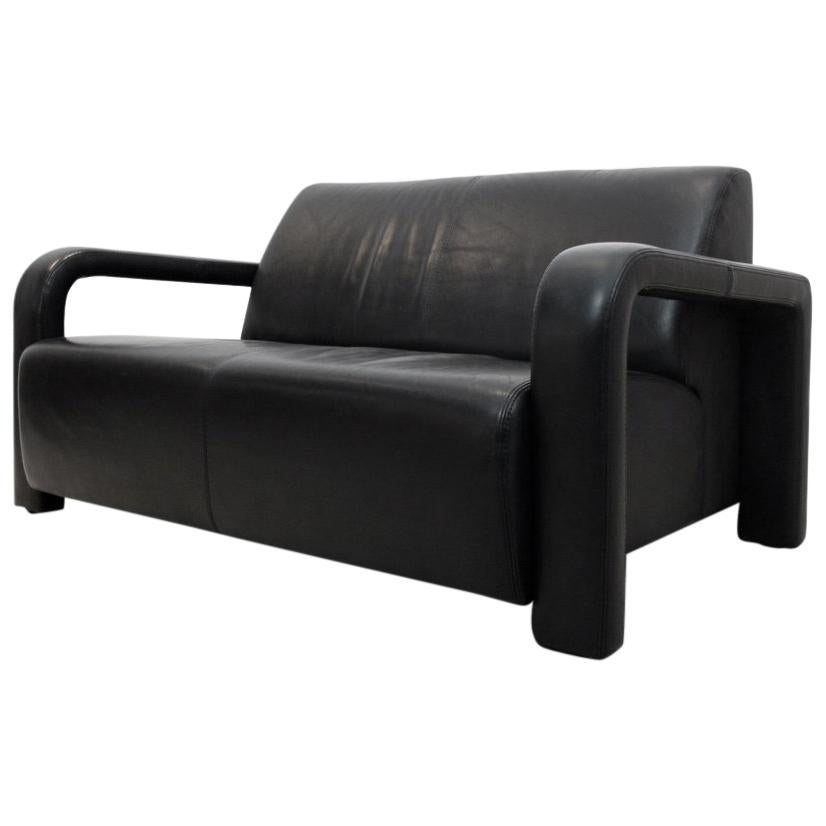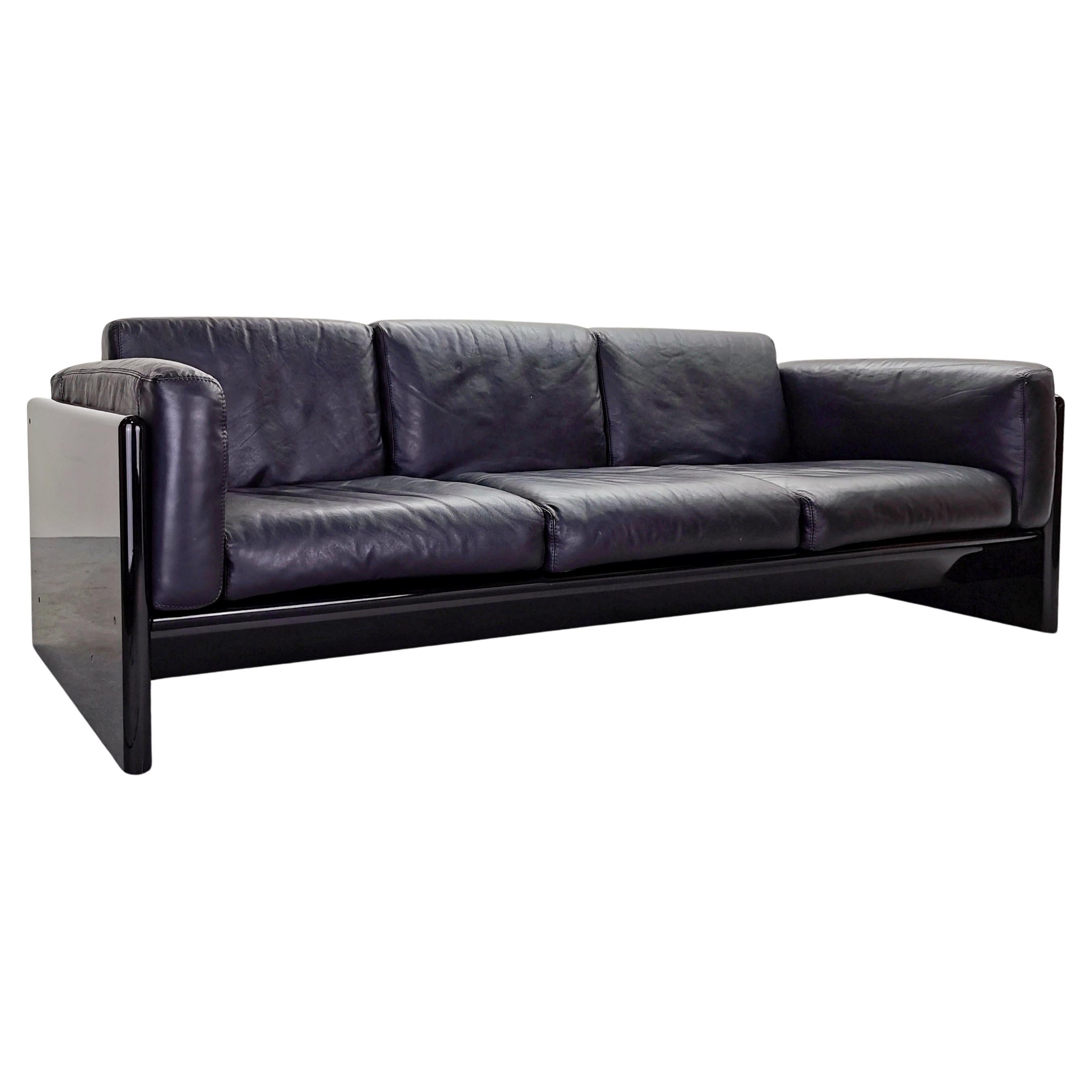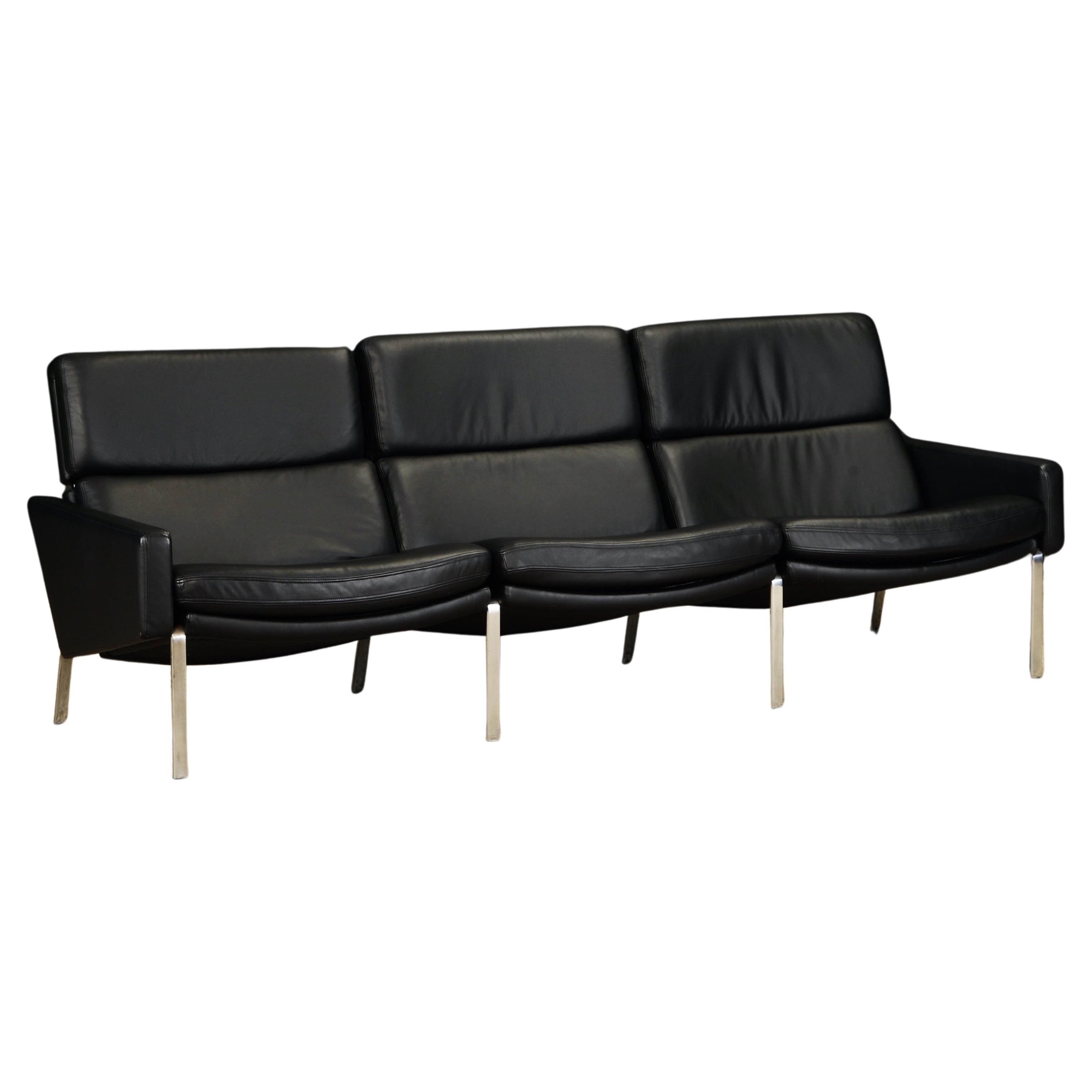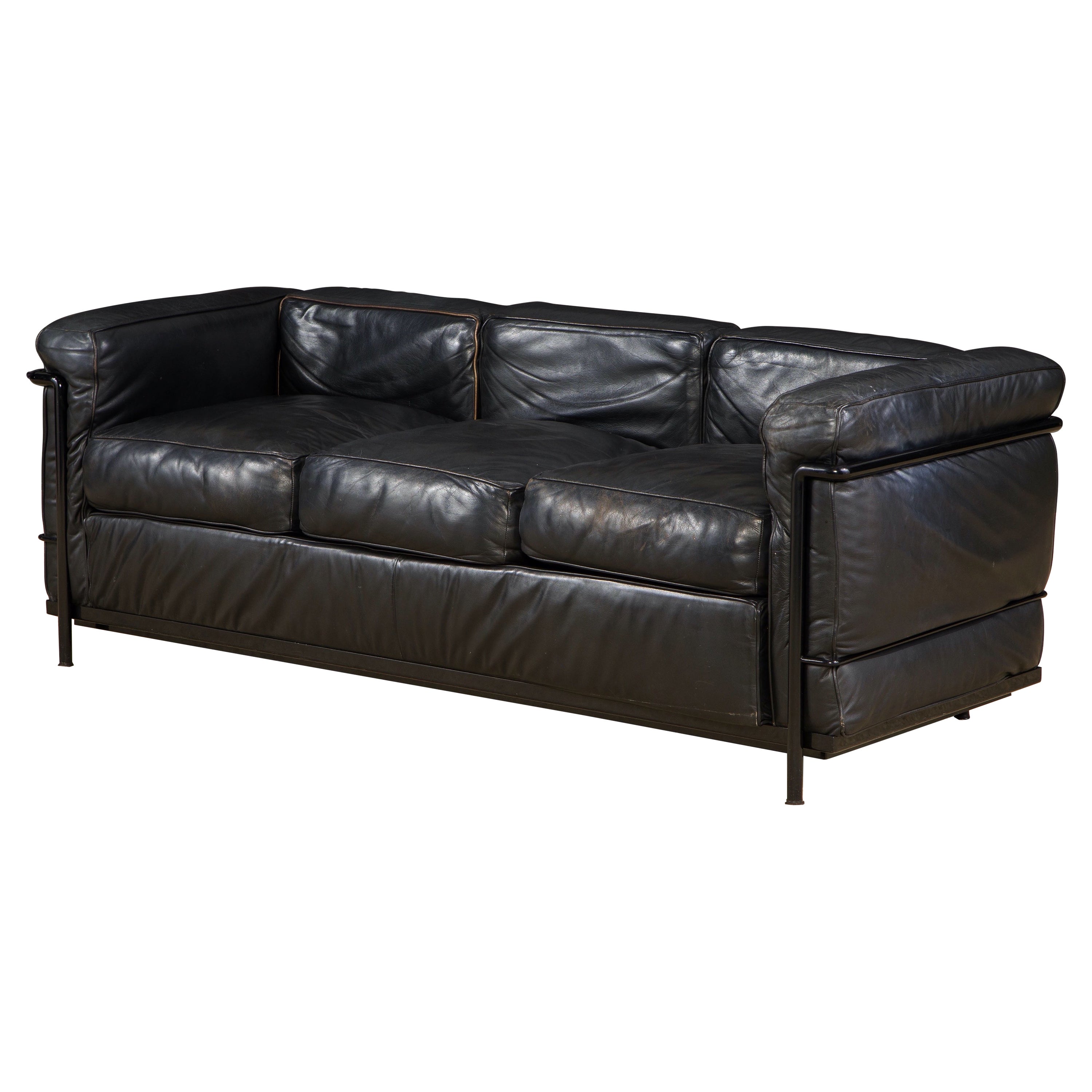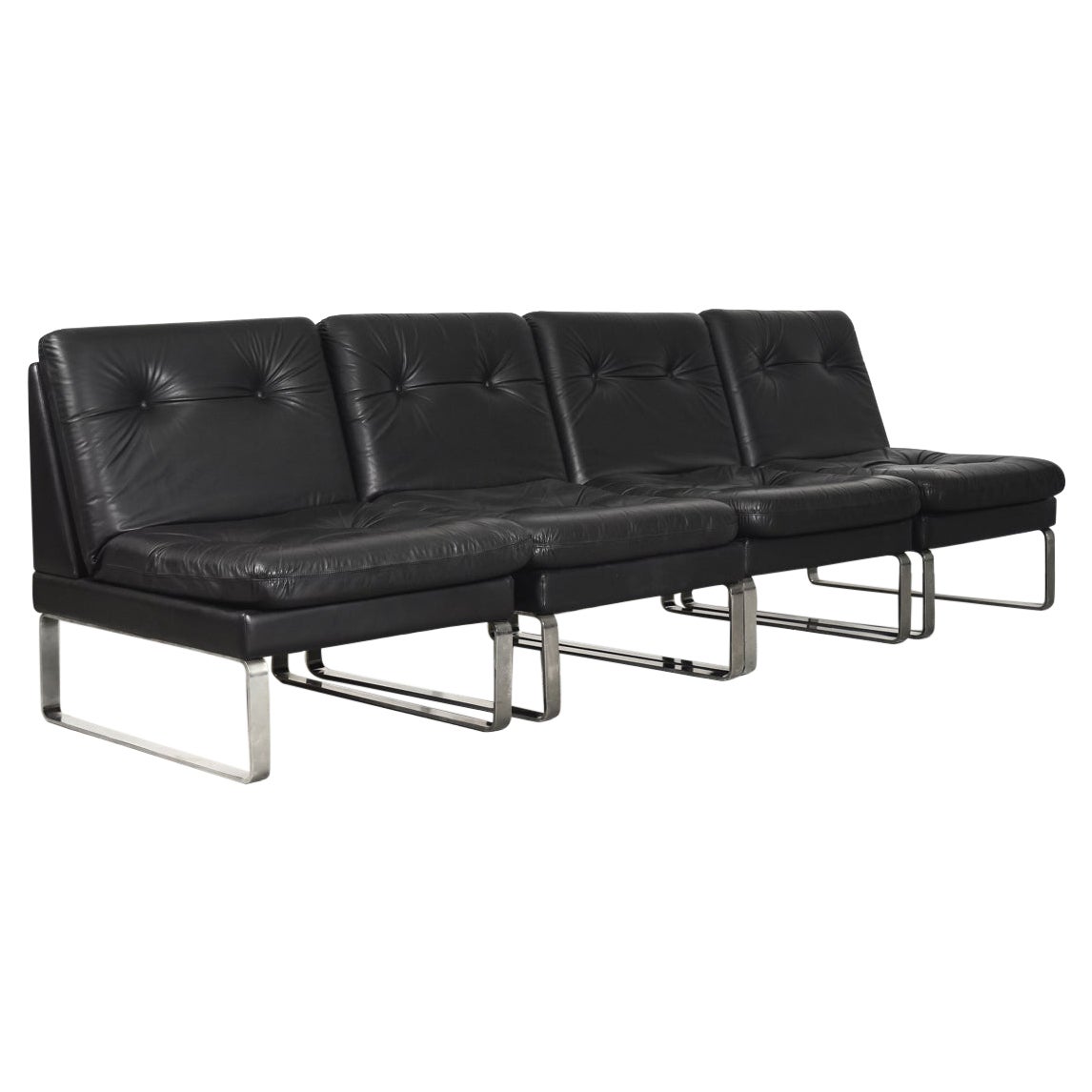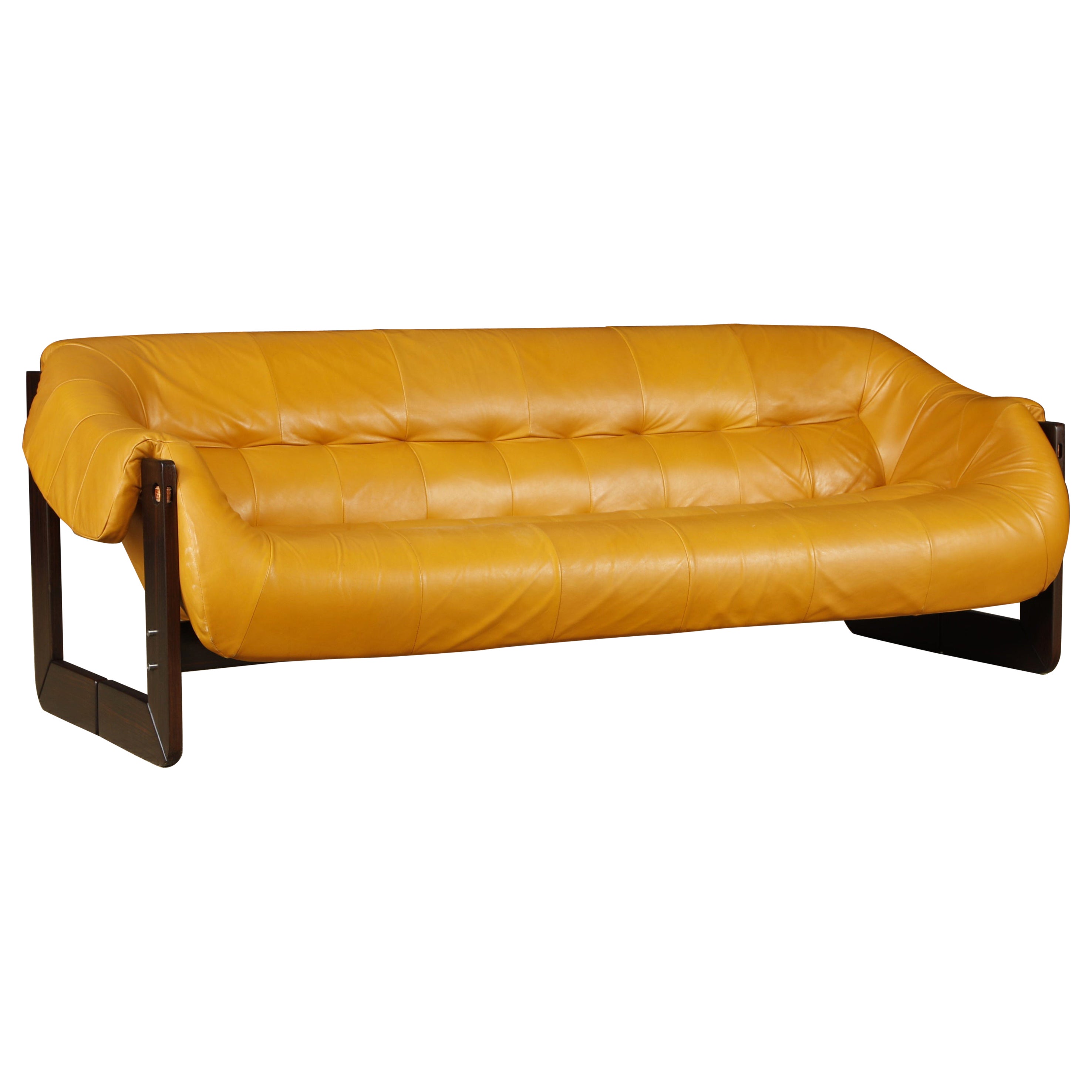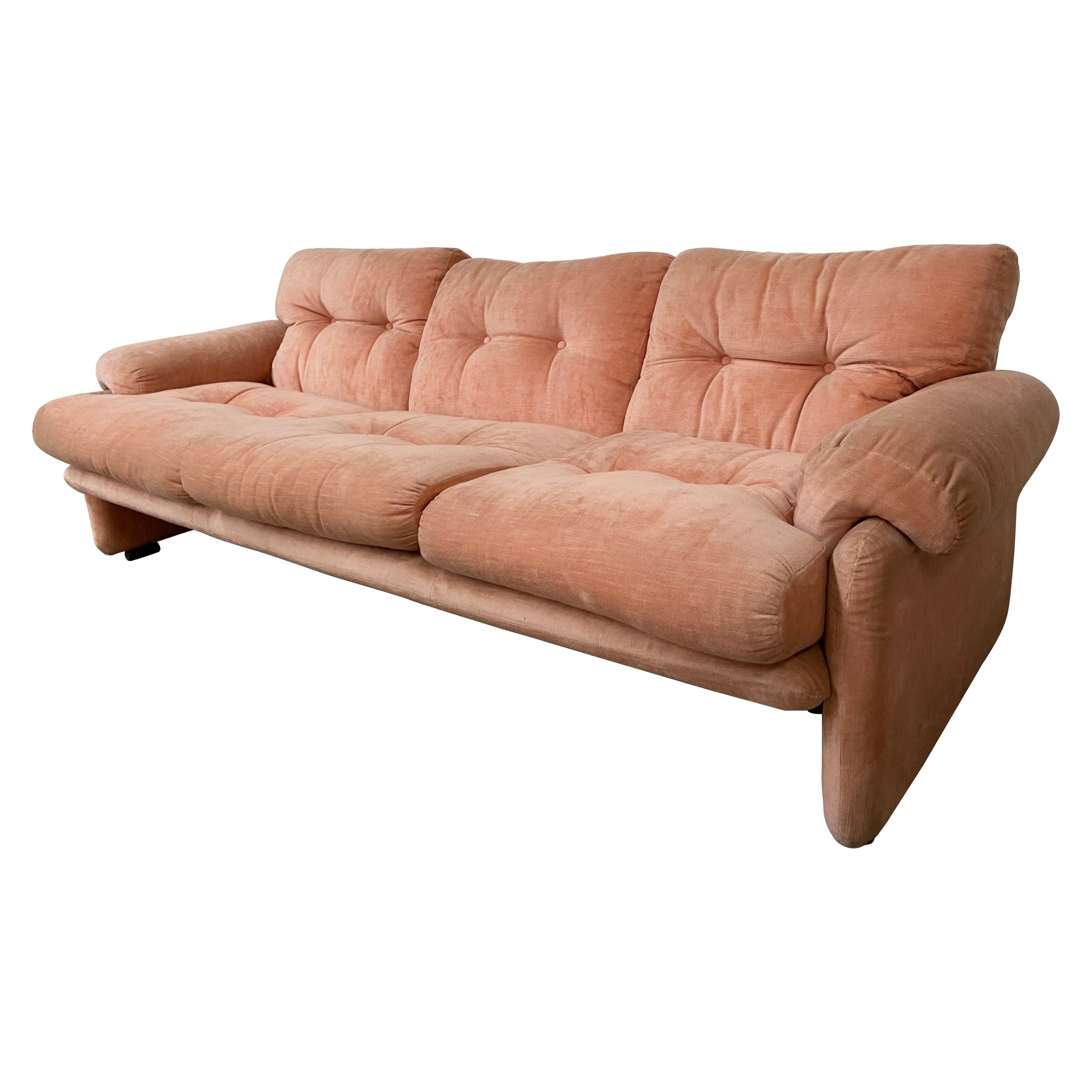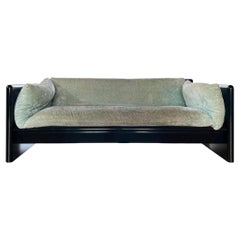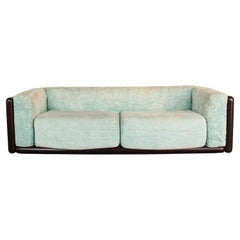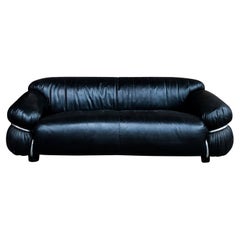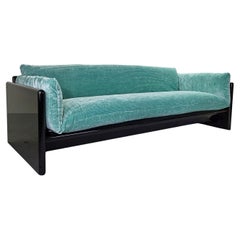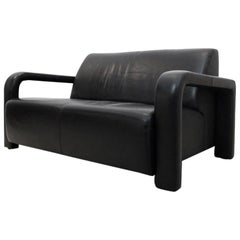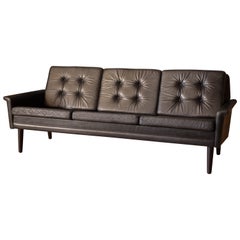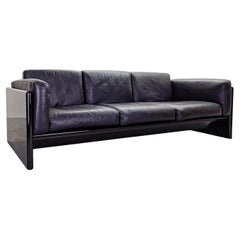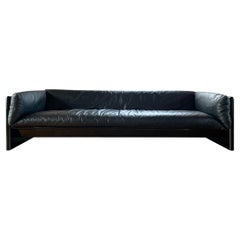
Studio Simon Minimalist Black Leather Three-Seater “Simone” Sofa, Italy, 1975
View Similar Items
Want more images or videos?
Request additional images or videos from the seller
1 of 8
Studio Simon Minimalist Black Leather Three-Seater “Simone” Sofa, Italy, 1975
About the Item
- Creator:Studio Simon (Manufacturer)
- Dimensions:Height: 20.48 in (52 cm)Width: 82.68 in (210 cm)Depth: 31.89 in (81 cm)Seat Height: 14.97 in (38 cm)
- Style:Mid-Century Modern (Of the Period)
- Materials and Techniques:
- Place of Origin:
- Period:
- Date of Manufacture:1975
- Condition:Minor fading.
- Seller Location:Vicenza, IT
- Reference Number:1stDibs: LU8019234018822
About the Seller
4.8
Gold Seller
Premium sellers maintaining a 4.3+ rating and 24-hour response times
Established in 2018
1stDibs seller since 2023
32 sales on 1stDibs
Typical response time: 2 hours
Authenticity Guarantee
In the unlikely event there’s an issue with an item’s authenticity, contact us within 1 year for a full refund. DetailsMoney-Back Guarantee
If your item is not as described, is damaged in transit, or does not arrive, contact us within 7 days for a full refund. Details24-Hour Cancellation
You have a 24-hour grace period in which to reconsider your purchase, with no questions asked.Vetted Professional Sellers
Our world-class sellers must adhere to strict standards for service and quality, maintaining the integrity of our listings.Price-Match Guarantee
If you find that a seller listed the same item for a lower price elsewhere, we’ll match it.Trusted Global Delivery
Our best-in-class carrier network provides specialized shipping options worldwide, including custom delivery.More From This Seller
View AllStudio Simon Black Wood and Azure Velvet Two-Seater “Simone” Sofa, Italy, 1975
By Studio Simon
Located in Vicenza, IT
Two-seater “Simone” sofa, designed and manufactured by Studio Simon in 1975.
The structure is made of black lacquered wood. An azure velvet big seat completes the sofa.
The min...
Category
Vintage 1970s Italian Mid-Century Modern Sofas
Materials
Cotton, Velvet, Foam
Carlo Scarpa Iroko Wood and Green Velvet Cornaro Sofa for Studio Simon, 1974
By Studio Simon, Carlo Scarpa
Located in Vicenza, IT
Cornaro two-seater sofa, designed by Carlo Scarpa and manufactured by Studio Simon in 1974.
Made of Iroko wood, foam, and azure chenille velvet.
Excellent vintage condition.
Born in Venice on June 2nd, 1906, Carlo Scarpa began working very early. Only a year after he had first qualified as an architect in 1926, he began working for the Murano glassmakers Cappellin & Co. in a consultative capacity; from 1927, he began to experiment with the Murano glass, and this research not only gave him excellent results here but would also inform his progress for many years to come. Between 1935 and 1937, as he entered his thirties, Carlo Scarpa accepted his first important commission, the renovation of Venice’s Cà Foscari. He adapted the spaces of this stately University building which stands on the banks of the Grand Canal, creating rooms for the Dean’s offices and a new hall for academic ceremonies; Mario Sironi and Mario De Luigi were charged with doing the restoration work on the frescos. After 1945, Carlo Scarpa was constantly busy with new commissions, including various furnishings and designs for the renovation of Venice’s Hotel Bauer and designing a tall building in Padua and a residential area in Feltre, all worth mentioning. One of his key works, despite its relatively modest diminished proportions, was the first of many works which were to follow in the nineteen fifties: the [bookshop known as the] Padiglione del Libro, which stands in Venice’s Giardini di Castello and shows clearly Scarpa’s passion for the works of Frank Lloyd Wright. In the years which were to follow, after he had met the American architect, Scarpa repeated similar experiments on other occasions, as can be seen, in particular, in the sketches he drew up in 1953 for villa Zoppas in Conegliano, which show some of his most promising work. However, this work unfortunately never came to fruition. Carlo Scarpa later created three museum layouts to prove pivotal in how twentieth-century museums were set up from then on. Between 1955 and 1957, he completed extension work on Treviso’s Gipsoteca Canoviana [the museum that houses Canova’s sculptures] in Possagno, taking a similar experimental approach to the one he used for the Venezuelan Pavilion at [Venice’s] Giardini di Castello which he was building at the same time (1954-56). In Possagno Carlo Scarpa was to create one of his most incredible ever works, which inevitably bears comparison with two other museum layouts that he was working on over the same period, those of the Galleria Nazionale di Sicilia, housed in the Palazzo Abatellis in Palermo (1953-55) and at the Castelvecchio in Verona (1957- 1974), all of which were highly acclaimed, adding to his growing fame. Two other buildings, which are beautifully arranged in spatial terms, can be added to this long list of key works that were started and, in some cases, even completed during the nineteen fifties. After winning the Olivetti Award for architecture in 1956, Scarpa began work in Venice’s Piazza San Marco on an area destined to house products made by the Industrial manufacturers Ivrea. Over the same period (1959-1963), he also worked on renovating and restoring the gardens and ground floor of the Fondazione Querini Stampalia in Venice, which many consider one of his greatest works. While he worked on-site at the Fondazione Querini Stampalia, Carlo Scarpa also began building a villa in Udine for the Veritti family. To shed some light on how much his work evolved over the years, it may be useful to compare this work with that of his very last building, villa Ottolenghi Bardolino, which was near completion at the time of his sudden death in 1978. Upon completion of villa Veritti over the next ten years, without ever letting up on his work on renovation and layouts, Scarpa accepted some highly challenging commissions which were to make the most of his formal skills, working on the Carlo Felice Theatre in Genoa as well as another theatre in Vicenza.
Towards the end of this decade, in 1969, Rina Brion commissioned Carlo Scarpa to build the Brion Mausoleum in San Vito d’Altivole (Treviso), a piece he continued to work on right up until the moment of his death. Nevertheless, even though he was totally absorbed by work on this mausoleum, plenty of other episodes can offer some insight into the final years of his career. As work on the San Vito d’Altivole Mausoleum began to lessen in 1973, Carlo Scarpa started building the new headquarters for the Banca Popolare di Verona. He drew up plans that were surprisingly different from the work he carried out simultaneously on the villa Ottolenghi. However, the plans Carlo Scarpa drew up, at different times, for a monument in Brescia’s Piazza della Loggia commemorating victims of the terrorist attack on May 28th, 1974, make a sharp contrast to the work he carried out in Verona, almost as if there is a certain hesitation after so many mannered excesses. The same Pietas that informs his designs for the Piazza Della Loggia can also be seen in the presence of the water that flows through the Brion Mausoleum, almost as if to give a concrete manifestation of pity in this twentieth-century work of art. Carlo Scarpa has put together a highly sophisticated collection of structures occupying the mausoleum’s L-shaped space stretching across both sides of the old San Vito d’Altivole cemetery. A myriad of different forms and an equally large number of different pieces, all of which are separate and yet inextricably linked to form a chain that seems to offer no promise of continuity, arising out of these are those whose only justification for being there is to bear the warning “si vis vitam, para mortem,” [if you wish to experience life prepare for death] as if to tell a tale that suggests the circle of time, joining together the commemoration of the dead with a celebration of life. At the entrance of the Brion Mausoleum stand the “propylaea,” followed by a cloister that ends by a small chapel, with an arcosolium bearing the family sarcophagi, the central pavilion, held in place on broken cast iron supports, stands over a mirror-shaped stretch of water and occupies one end of the family’s burial space. The musical sound of the walkways, teamed with the luminosity of these harmoniously blended spaces, shows how, in keeping with his strong sense of vision, Carlo Scarpa could make the most of all his many skills to come up with this truly magnificent space. As well as an outstanding commitment to architectural work, with the many projects we have already seen punctuating his career, Carlo Scarpa also made many equally important forays into the world of applied arts. Between 1926 and 1931, he worked for the Murano glassmakers Cappellin, later taking what he had learned with him when he went to work for the glassmakers Venini from 1933 until the 1950s. The story of how he came to work on furniture design is different, however, and began with the furniture he designed to replace lost furnishings during his renovation of Cà Foscari. The later mass-produced furniture started differently, given that many pieces were originally one-off designs “made to measure.” Industrial manufacturing using these designs as prototypes came into being thanks to the continuity afforded him by Dino Gavina, who, as well as this, also invited Carlo Scarpa to become president of the company Gavina SpA, later to become SIMON, a company Gavina founded eight years on, in partnership with Maria Simoncini (whose own name accounts for the choice of company name). Carlo Scarpa and Gavina forged a strong bond in 1968 as they began to put various models of his into production for Simon, such as the “Doge” table, which also formed the basis for the “Sarpi” and “Florian” tables. In the early seventies, other tables that followed included “Valmarana,” “Quatour,” and “Orseolo.” While in 1974, they added a couch and armchair, “Cornaro,” to the collection and the “Toledo” bed...
Category
Vintage 1970s Italian Mid-Century Modern Living Room Sets
Materials
Velvet, Foam, Chenille, Wood
Gianfranco Frattini Black Leather Sesann Two-Seater Sofa for Cassina, 1972
By Cassina, Gianfranco Frattini
Located in Vicenza, IT
Sesann two-seater sofa, designed by Gianfranco Frattini in 1970 and produced by the Italian manufacturer Cassina.
It features black leather upholstery and a chrome tubular cage as s...
Category
Vintage 1970s Italian Space Age Living Room Sets
Materials
Chrome
Afra and Tobia Scarpa Brown Velvet Soriana Three Seater Sofa for Cassina, 1969
By Afra & Tobia Scarpa, Cassina
Located in Vicenza, IT
Soriana three seater sofa, designed by Afra and Tobia Scarpa, and produced by the Italian manufacturer Cassina in 1969.
Re-upholstered with brown ve...
Category
Vintage 1960s Italian Space Age Sofas
Materials
Chrome
Afra and Tobia Scarpa Brown Leather Two-Seater Soriana Sofa for Cassina, 1969
By Cassina, Afra & Tobia Scarpa
Located in Vicenza, IT
Soriana two-seater sofa, designed by Afra and Tobia Scarpa, and produced by the Italian manufacturer Cassina in 1969.
It features its original brown leather upholstery.
Winner of t...
Category
Vintage 1960s Italian Space Age Sofas
Materials
Chrome
$11,954 Sale Price
25% Off
Gianfranco Frattini Beige Wool Bouclé Sesann Two-Seater Sofa for Cassina, 1972
By Gianfranco Frattini, Cassina
Located in Vicenza, IT
Sesann two-seater sofa, designed by Gianfranco Frattini in 1970 and produced by the Italian manufacturer Cassina.
It features wool bouclé upholstery and a chrome tubular cage as s...
Category
Vintage 1970s Italian Space Age Living Room Sets
Materials
Chrome
You May Also Like
Sofa "Simone" 3 seater Studio Simon by Gavina glossy black lacquered
By Studio Simon, Gavina
Located in Milano, MI
Elegant "Simone" Sofa Designed by Dino Gavina for Studio Simon in the 1970s.
The black glossy lacquered wood frame allows it to be placed in the center of the room having a very eleg...
Category
Mid-20th Century Italian Mid-Century Modern Sofas
Materials
Velvet, Wood
$7,487 Sale Price
25% Off
Modern Marinelli Two-Seat Black Leather Sofa, Italy
By Marinelli Home 1
Located in Voorburg, NL
Amazing black leather two seat sofa manufactured by Marinelli of Italy. This sofa is very solid and extremely comfortable to sit in. The so...
Category
Mid-20th Century Italian Mid-Century Modern Sofas
Materials
Leather
$3,606 Sale Price
20% Off
Vintage Scandinavian Rosewood and Black Leather Three Seat Sofa
Located in San Jose, CA
Mid century modern 3-seater sofa in rosewood and leather circa 1960's, Denmark. This comfortable statement piece can be displayed from any angle and features sculptural curved armres...
Category
Vintage 1960s Danish Scandinavian Modern Sofas
Materials
Leather, Rosewood
$5,440 Sale Price
20% Off
Lacquered 3-seater sofa and leather Studio Simon by Gavina
By Studio Simon, Dino Gavina
Located in Milano, MI
Elegant "Simone" Sofa Designed by Dino Gavina for Studio Simon in the 1970s.
Cushions upholstered in black leather and polyester lacquered wood frame, glossy black.
Sofa frame solid...
Category
Mid-20th Century Italian Mid-Century Modern Sofas
Materials
Leather, Wood
$7,759 Sale Price
30% Off
Black Leather FK-883 Three-Seat Sofa by Preben Fabricius & Jorgen Kastholm
By Preben Fabricius, Harvey Probber, Jørgen Kastholm
Located in Los Angeles, CA
Here's a rarely seen design - this circa 1970s 'FK-883' sofa in black leather by Preben Fabricius & Jorgen Kastholm for Alfred Kill International and distributed by Harvey Probber in...
Category
Vintage 1970s American Modern Sofas
Materials
Steel
$10,500 Sale Price
25% Off
Kristian Vedel Modus Three-Seat Sofa
By Kristian Solmer Vedel, Soren Willadsen Mobelfabrik
Located in Brooklyn, NY
Danish modern three-seat Modus sofa, designed by Kristian Vedel for Soren Willadsen. Low back version, with padded leather back and armrests. Minimal oak frame shows a beautiful, war...
Category
20th Century Danish Mid-Century Modern Living Room Sets
Materials
Leather, Upholstery, Oak
$7,700 Sale Price / set
30% Off
Recently Viewed
View AllMore Ways To Browse
Retro Bakery Table
Retro G Plan Dining Table And Chairs
Retro Glass Pencil Holder
Retro Ice Cream Scoop
Retro Vermouth Poster
Retro Vintage Teak Coffee Table
Revenue Cutter
Ricard Ceramic
Ricci Art Deco
Richard Ginori Plates Green
Richard Panther
Richard Schultz Topiary Chairs
Riddler Rack
Riddling Rack
Ridgway Dessert Set
Rimbert Sandholt
Risom Console
Robert Barron
